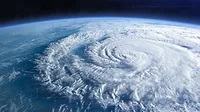3 safety tips to prepare for wildfire season 2022

Photo by Malachi Brooks on Unsplash
The wildfire season has started in many countries. With rising temperatures and below-average rainfall, comes an increased risk of extreme fires, which are worsening and becoming more frequent worldwide, including in the U.S., Europe and the U.K.
According to the US EPA, wildfires can harm property, livelihoods, and human health. For example, in the USA, before the start of the season, 3.9 million acres have burned from January 1 through June 30, 2022, which is nearly 2.3 times the average across the country during those months.
Managers with operations in at-risk areas should ensure they have comprehensive procedures in place to guarantee business continuity, factoring in the potential need for evacuation or relocation of the workforce.
Below are some best practice tips for wildfire preparedness, according to International SOS:
- Ahead of a wildfire, you should prepare your property. Remove flammable materials and vegetation within a 30-foot radius of structures. Outdoor furniture should be brought inside or placed in swimming pools. Close all windows and doors and leave them unlocked. Take down any drapes and curtains; consider fire-resistant window coverings. Shut off sprinklers and running water to preserve critical water pressure. Turn off gas and electricity supply to minimize residual damage.
- Consider evacuation options. Identify potential alternative accommodations in case evacuation is necessary, such as friends’ or relatives’ homes in other towns, public shelters or hotels. Ensure you know how to reach your pre-identified accommodation and be ready to take alternative routes if major roads are disrupted. Organizations must have a disaster plan in place, including meeting locations and communication plans, accounting for potential power disruption. Keep an emergency supply kit ready and plan multiple evacuation routes.
- Know who to contact. Ensure you save contact numbers of the police/emergency services, your nearest Assistance Center and other local numbers that could be helpful in an emergency. Write down these details in the event that your phone runs out of power and is unable to be recharged. Designate an out-of-area contact person in case of group separation.
The impact of climate change, human factors, fire suppression and winds are worsening wildfire concerns in western, southwestern, and eastern regions of the U.S., and the threat of wildfires is only set to increase as more people live in and around forests, grasslands, and other natural areas.
“Wildfires hold a major threat to businesses on the ground and business travelers,” said Tyler Hosford, Regional Security Manager of International SOS. “It’s important for organizations to have a plan in place ahead of an emergency. Not only is a plan key for business continuity, but also for the health and safety of employees, travelers and their families.”
For more tips and best practices on preparing for natural disasters, emergency events and more, visit:
Looking for a reprint of this article?
From high-res PDFs to custom plaques, order your copy today!





